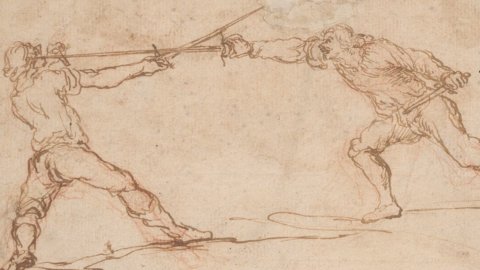It is an indisputable fact that sport also has an aesthetic and in many cases artistic value, but the nice initiative of the Uffizi Gallery in Florence has decided to go further: since the Tokyo Olympics began, one of the country's top cultural institutions has decided to celebrate many of the medals won by Italian athletes (at the time of writing there are already 30) by posting on their Twitter profile – followed by over 50 people – a photo of a work of art from his rich collection, to be combined with the theme of the race and the disputed discipline. We started on Friday 23 July, the day of the inaugural ceremony, with the best wishes addressed to all the athletes: to illustrate the message, the photo of three statues, from the Roman era, depicting athletes of ancient Greece (where the Games were born). To be precise Apoxyomenos (II AD); copy from Doryphoros by Polycletus (II-I BC); Athlete (I-II AD).
Then, gradually, the Uffizi social account focused on Italian medals, each time finding an artistic reference. Thus, for example, the bronze medalist weightlifter Mirko Zanni became “Atlas holding up heaven and earth”, painted by Alessandro Allori in 1581; or the various swimming medals have been summarized in "Triumph of Neptune and Amphitrite", by Filippo Napoletano from 1618 and exhibited in this case at Palazzo Pitti. But that is not all. Fencing medalists could only be represented by swordsmen, a very recurring figure in art: a very pertinent duel drawn by Salvator Rosa in the 1680th century appeared on Twitter, or Jacques Callot's "Three men with swords". Another recurring figure in art is that of the bow and archers, often linked to ancient deities (such as the Greek Artemis): therefore our archery shooters, Lucilla Boari and Mauro Nespoli, have found their alter ego respectively in "Diana the huntress", the Roman goddess painted in XNUMX by Onorio Munari, and in "Hercules naked seen almost from behind" (Grien Hans Baldung, XNUMXth century).
Representations of the sea and naval fleets abound in the works of all eras, so the rowing coxless four medal was celebrated on Twitter with a painting that describes it a lot: "Festa in Darsena in Livorno for the arrival of Leopold I ” (Tommaso Gherardini, 1766). Vanessa Ferrari's historic silver medal in artistic gymnastics (speaking of art) was narrated by what the same Uffizi account defines as "the immortal grace of a nymph", in a statue from the 10nd century AD. To then arrive at the apotheosis, at the two most important medals so far (without detracting from anything), the gold ones won in the space of 1 minutes, on Sunday XNUMXst August, by Gianmarco Tamberi in the high jump and by Marcell Jacobs in the 100m dash. It is no coincidence that the post was pinned to the top of the Florentine gallery's Twitter page: to celebrate the legendary brace, the Uffizi simply suggest "raising your glasses". And so here is Bacchus, in a painting by none other than Caravaggio.





